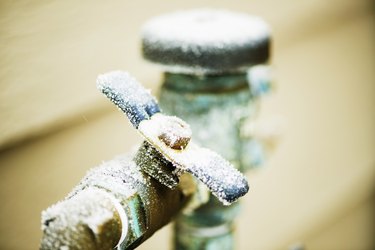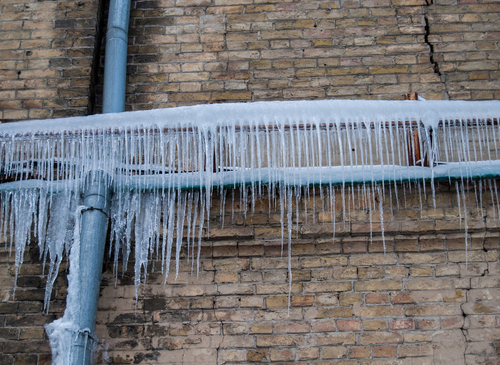Do you find yourself trying to find info involving Prevent Frozen Pipes ?

Cold weather can damage your plumbing, particularly by freezing pipelines. Below's exactly how to prevent it from happening and what to do if it does.
Intro
As temperature levels decline, the danger of icy pipelines rises, possibly resulting in expensive repair services and water damages. Recognizing just how to stop icy pipelines is essential for property owners in chilly climates.
Avoidance Tips
Shielding prone pipelines
Wrap pipes in insulation sleeves or make use of warm tape to safeguard them from freezing temperatures. Concentrate on pipes in unheated or exterior locations of the home.
Heating techniques
Maintain interior rooms sufficiently heated, specifically areas with pipes. Open closet doors to allow cozy air to circulate around pipelines under sinks.
Just how to identify frozen pipelines
Try to find decreased water flow from taps, unusual odors or sounds from pipes, and visible frost on revealed pipes.
Long-Term Solutions
Architectural modifications
Think about rerouting pipelines away from exterior wall surfaces or unheated areas. Include extra insulation to attic rooms, basements, and crawl spaces.
Updating insulation
Invest in high-grade insulation for pipes, attic rooms, and wall surfaces. Proper insulation aids preserve regular temperature levels and reduces the danger of icy pipes.
Shielding Outdoor Plumbing
Yard hoses and outside taps
Separate and drain garden pipes prior to winter. Set up frost-proof faucets or cover exterior taps with insulated caps.
Understanding Frozen Pipes
What triggers pipelines to ice up?
Pipelines ice up when revealed to temperature levels listed below 32 ° F (0 ° C) for expanded durations. As water inside the pipelines ices up, it increases, taxing the pipe walls and possibly creating them to break.
Threats and problems
Frozen pipes can lead to supply of water disruptions, home damage, and expensive fixings. Ruptured pipes can flood homes and create substantial structural damages.
Indications of Frozen Pipeline
Recognizing icy pipes early can avoid them from bursting.
What to Do If Your Pipelines Freeze
Immediate actions to take
If you suspect icy pipes, keep taps available to relieve stress as the ice thaws. Utilize a hairdryer or towels taken in hot water to thaw pipelines gradually.
Final thought
Protecting against frozen pipelines calls for proactive procedures and fast reactions. By comprehending the reasons, signs, and preventive measures, house owners can protect their plumbing during winter.
5 Ways to Prevent Frozen Pipes
Drain Outdoor Faucets and Disconnect Hoses
First, close the shut-off valve that controls the flow of water in the pipe to your outdoor faucet. Then, head outside to disconnect and drain your hose and open the outdoor faucet to allow the water to completely drain out of the line. Turn off the faucet when done. Finally, head back to the shut-off valve and drain the remaining water inside the pipe into a bucket or container. Additionally, if you have a home irrigation system, you should consider hiring an expert to clear the system of water each year.
Insulate Pipes
One of the best and most cost-effective methods for preventing frozen water pipes is to wrap your pipes with insulation. This is especially important for areas in your home that aren’t exposed to heat, such as an attic. We suggest using foam sleeves, which can typically be found at your local hardware store.
Keep Heat Running at 65
Your pipes are located inside your walls, and the temperature there is much colder than the rest of the house. To prevent your pipes from freezing, The Insurance Information Institute suggests that you keep your home heated to at least 65 degrees, even when traveling. You may want to invest in smart devices that can keep an eye on the temperature in your home while you’re away.
Leave Water Dripping
Moving water — even a small trickle — can prevent ice from forming inside your pipes. When freezing temps are imminent, start a drip of water from all faucets that serve exposed pipes. Leaving a few faucets running will also help relieve pressure inside the pipes and help prevent a rupture if the water inside freezes.
Open Cupboard Doors
Warm your kitchen and bathroom pipes by opening cupboards and vanities. You should also leave your interior doors ajar to help warm air circulate evenly throughout your home.

I stumbled upon that blog entry about Preventing and dealing with frozen pipes while doing a lookup on the search engines. Do you know somebody else who is intrigued by the topic? Why not share it. Thanks so much for going through it.
Visit Our Website
Comments on “Preventing Frozen Pipes in Winter: Essential Tips”